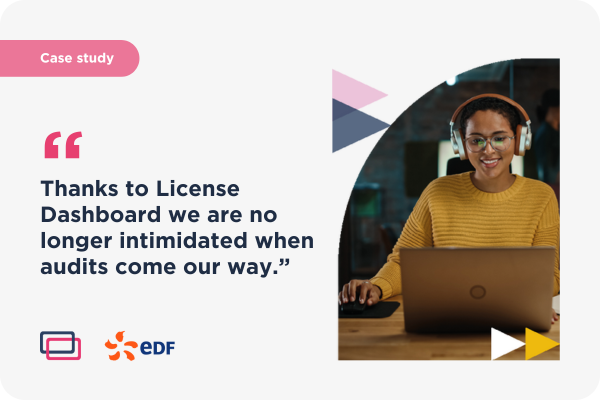2025 and beyond: the trends transforming software asset management
14th December 2024
Michaela Gray
Blog,
With new technologies, changing business models, and a rapidly shifting regulatory environment, SAM is no longer just about tracking licenses; it’s about making smarter, data-driven decisions that drive efficiency and support business goals.
Here’s what to keep an eye on as we move forward into 2025:

AI and automation in SAM
Artificial intelligence (AI) and automation are set to completely transform the way software assets are managed. No longer will SAM professionals have to rely on manual processes to track, monitor, and analyse software usage.
Key impact areas:
- Predictive analytics for licence management: AI will help organisations forecast software usage patterns and make proactive decisions regarding renewals and license allocation. No more guessing about whether your licenses are being overused or underutilised
- Automated compliance checks: AI can run continuous compliance checks, alerting organisations about potential license violations before they become costly problems. This reduces manual oversight and minimises the risk of non-compliance
- Smarter reporting and insights: automation can generate reports in real-time, providing decision-makers with valuable insights into software usage, cost efficiency, and potential savings
The increasing importance of SaaS management
As subscription-based software models (SaaS) become the norm, managing these assets is more critical than ever. SaaS offers flexibility and scalability, but it also comes with its own set of challenges.
Why SaaS management matters:
- Tracking usage and costs: unlike traditional perpetual licenses, SaaS subscriptions are often charged on a recurring basis. Keeping tabs on usage metrics and ensuring you’re not paying for unused licences can help control costs
- Compliance challenges: with numerous vendors, varied subscription models, and complex terms of service, staying compliant across your SaaS stack requires a structured approach. Without effective SaaS management, you risk overspending or violating vendor terms
- Optimising renewals: managing SaaS contracts is also about knowing when to renew or cancel. AI can help predict which subscriptions are providing value and which might be redundant
Organisations that fail to manage their SaaS assets effectively may find themselves paying for unused licences or facing unexpected audits. It’s time to get proactive about SaaS management to stay on top of your subscription-based tools.
IT and SAM news delivered straight to you
Integration of ITAM and SAM
In 2025, the distinction between IT Asset Management (ITAM) and SAM will continue to blur. ITAM traditionally focuses on managing physical assets like computers and hardware, while SAM has been centered around software licences. But as organisations look for more holistic approaches to asset management, ITAM and SAM increasingly converge.
By integrating ITAM and SAM, companies will gain a clearer, more complete picture of all their assets, both hardware and software. This integration provides a unified view of the entire IT ecosystem, helping organisations make more informed decisions about both hardware and software investments. It also enables businesses to improve operational efficiencies by ensuring that both hardware and software are used effectively and that resources aren’t being wasted.
Emphasis on cyber security and compliance
As cyber security threats continue to escalate, software asset management will take on even greater significance. Organisations are now under more scrutiny than ever, with regulators demanding that businesses ensure software compliance and security.
Key focus areas:
- Heightened security risks: cyber threats targeting software vulnerabilities are increasing, making it essential to not only track software licences but also ensure that security patches and updates are being applied promptly
- Regulatory compliance: with GDPR, CCPA, and other data privacy laws in full swing, maintaining compliance with software licensing and usage policies is a top priority. Non-compliance can result in costly fines and damage to your brand reputation
- License audits: software vendors are conducting more audits, and the penalties for non-compliance are becoming more severe. SAM practices will need to be more proactive in preparing for and navigating these audits
In 2025, organisations will need to make cyber security a core part of their SAM strategy, aligning security protocols with licensing practices to reduce risk.
Sustainability and green IT
As organisations work to reduce their carbon footprints and adopt greener practices, SAM will play an important role in supporting these sustainability goals. Efficient software management can help organisations reduce waste, optimise usage, and ensure that their IT operations are as environmentally friendly as possible.
SAM practices will evolve to align with broader green IT strategies, helping organisations make more sustainable decisions about software purchases, usage, and disposal. For example, organisations may choose to optimize software licenses to reduce unnecessary usage or adopt virtualised environments that require less energy. As the pressure to go green increases, SAM will need to support these efforts by managing software assets in a way that reduces environmental impact.
The key takeaway? The landscape is changing, and SAM must evolve to meet these new challenges. By staying proactive, adapting to these trends, and investing in the right technologies, organisations can ensure they are ready for the future, whatever it may bring.
Read more about GreenOps in ITAM here.
Ready to future-proof your software asset management strategy?
Get in touch with our specialists to discover how our tools and expertise can help you stay ahead in 2025 and beyond.
Get in touch















